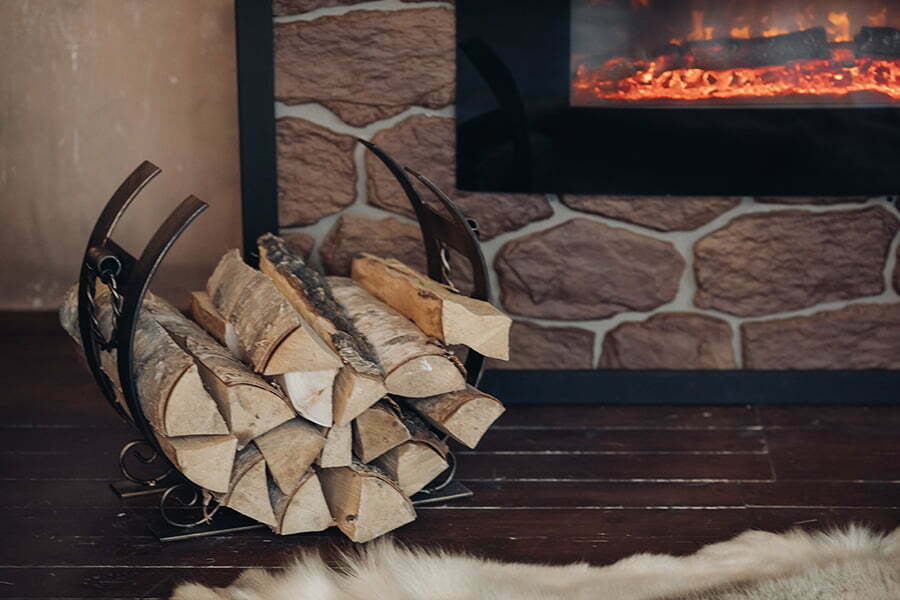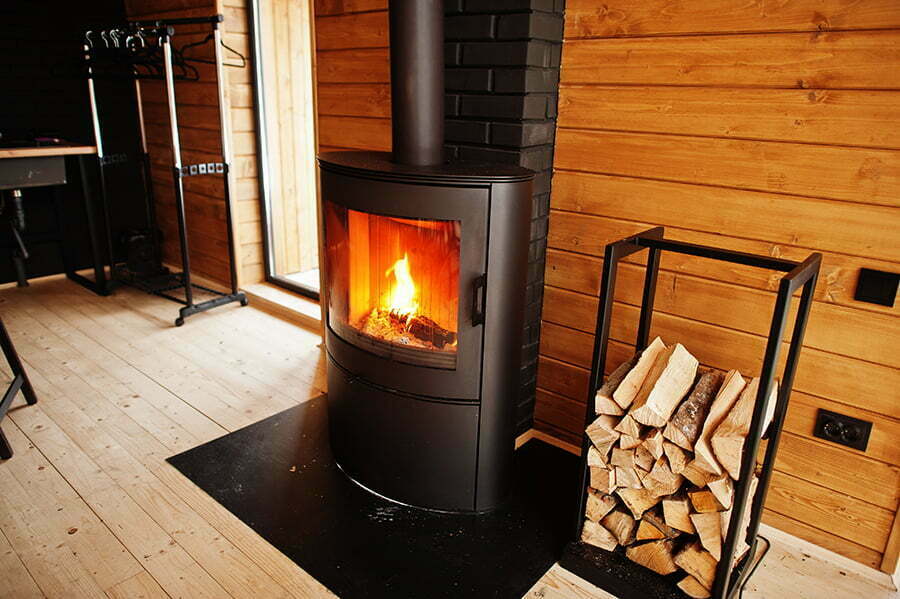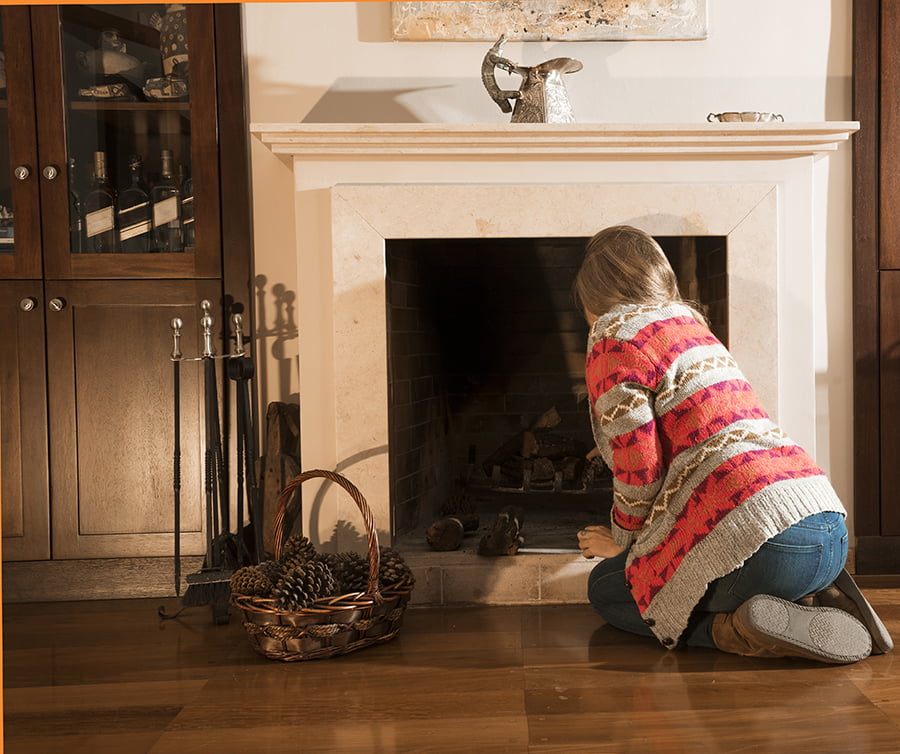Protect your home’s air quality by learning how to reduce harmful pollutants from fireplaces and wood stoves with these expert tips.
As the winter season approaches, many of us look forward to cozy nights spent by the fireplace or wood stove. The warmth and ambiance they provide can be truly magical.
However, what many people don’t realize is that these sources of heat can also be a major contributor to indoor air pollution.
The smoke from our wood stove was filling our home with harmful pollutants such as carbon monoxide, nitrogen dioxide, and particulate matter.
If you too rely on a fireplace or wood stove for heat during the colder months, it’s important to take steps to combat indoor air pollution. In this blog post, we’ll explore some simple yet effective ways to improve your indoor air quality while still enjoying those cozy fireside moments.
The Cozy Culprit: Fireplaces & Wood Stoves

The cozy warmth and ambiance provided by fireplaces and wood stoves are hard to resist, especially during the winter season. However, these sources of heat can also be a major culprit when it comes to indoor air pollution.
The smoke produced by burning wood contains harmful pollutants such as carbon monoxide, nitrogen dioxide, and particulate matter that can cause respiratory problems.
It’s important for homeowners who rely on fireplaces or wood stoves for heating their homes to understand the risks associated with them. By taking steps towards combating indoor air pollution from these sources of heat, you can still enjoy those warm fireside moments without compromising your health or that of your loved ones’.
Smoke Signals: Understanding Indoor Air Pollution

When we burn wood, it releases smoke into our homes that contains harmful pollutants such as carbon monoxide, nitrogen dioxide, and particulate matter.
Carbon monoxide is an odorless gas that can cause headaches, dizziness, nausea and even death in high concentrations. Nitrogen dioxide is a reddish-brown gas with a sharp smell that can irritate the eyes and respiratory system.
Particulate matter consists of tiny particles suspended in the air which are small enough to enter our lungs when we breathe them in.
All of these pollutants have been linked to various health problems including respiratory issues like asthma or chronic obstructive pulmonary disease (COPD), heart disease or stroke.
Understanding how these pollutants affect us is crucial for combating indoor air pollution from fireplaces and wood stoves. In this article we’ll explore some simple yet effective ways you can improve your home’s indoor air quality while still enjoying those cozy fireside moments without worrying about your health being compromised by poor-quality indoor air!
Fuel for Thought: Choosing the Right Wood

Not all firewood is created equal when it comes to producing harmful pollutants. One important factor to consider is moisture content. Wet or green wood produces more smoke and releases higher levels of particulate matter into your home’s air than dry, seasoned wood.
It’s best to use well-seasoned hardwoods like oak or maple that have been dried for at least six months before being burned.
Another consideration is the type of tree species you’re burning. Softwoods like pine and spruce contain high levels of resin which can create creosote buildup in your chimney over time, increasing fire risk as well as releasing harmful pollutants into your home’s air.
By choosing dry, seasoned hardwoods from sustainable sources such as local farms or forests managed with responsible forestry practices, you’ll not only reduce indoor pollution but also support environmentally friendly practices.
Burning Brightly, Breathing Easily: Proper Ventilation

One of the most important steps you can take to combat indoor air pollution from fireplaces and wood stoves is to ensure proper ventilation.
Without adequate ventilation, harmful pollutants such as carbon monoxide and nitrogen dioxide can build up inside your home quickly.
To prevent this from happening in your own home, make sure that your fireplace or wood stove is properly vented to the outside of your house. This will allow any harmful pollutants produced by burning fuel to be safely expelled outdoors instead of lingering inside where they could harm you and your loved ones.
If you’re unsure whether or not your fireplace or wood stove has proper ventilation installed already – don’t hesitate! Contact a professional HVAC technician who can assess it for safety concerns and recommend any necessary upgrades or repairs needed before using it again this winter season.
Clean Sweep: Regular Maintenance Matters

Regular cleaning and maintenance are crucial for ensuring that your fireplace or wood stove is operating efficiently without releasing harmful pollutants into your home.
One important step you can take is to have a professional chimney sweep clean out your chimney at least once a year. This will remove any buildup of creosote, which can ignite and cause dangerous fires if left unchecked.
It will also clear out any debris or blockages that could prevent smoke from properly venting outside.
In addition to hiring a professional, there are some simple steps you can take on your own as well. Make sure to regularly clean out ash from inside the firebox using an ash vacuum or metal scoop (never use a regular household vacuum).
Check for cracks in the firebricks or mortar joints around them; these should be repaired promptly by someone with experience working with masonry materials.
By taking these steps towards regular maintenance, you’ll not only improve indoor air quality but also ensure safe operation of your fireplace or wood stove all winter long!
Filter Finesse: Upgrading Your Home’s Air Filters

One of the most effective ways to combat indoor air pollution from fireplaces and wood stoves is by upgrading your home’s air filters. However, a high-quality filter can capture many of these pollutants before they have a chance to circulate throughout your living space.
There are several types of filters available on the market today – ranging from basic fiberglass options to more advanced HEPA (High-Efficiency Particulate Air) models. While each type has its own benefits and drawbacks depending on factors like cost and effectiveness at capturing specific pollutants – one thing is certain: any upgrade will be beneficial for improving overall indoor air quality.
So if you’re looking for an easy way to reduce exposure to harmful particles released by fireplaces or wood stoves this winter season – consider upgrading your home’s HVAC system with higher-quality filtration technology!
Eco-Friendly Alternatives to Traditional Fireplaces

If you’re concerned about the impact of traditional fireplaces and wood stoves on indoor air quality, there are eco-friendly alternatives that can provide warmth without compromising your health or the environment.
Pellet stoves burn compressed sawdust pellets instead of logs, which produces less smoke and particulate matter. Another option is an electric fireplace or space heater.
While they may not have quite the same ambiance as a real flame, they are much cleaner burning and don’t require any ventilation systems like chimneys or flues. If you’re building a new home or doing major renovations, consider installing radiant floor heating instead of relying on traditional heating methods altogether.
This system uses hot water pipes under your flooring to heat your home from below – no need for any kindling at all! By making small changes like these in our homes we can reduce our carbon footprint while still enjoying cozy winter nights by the fire!